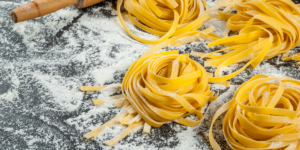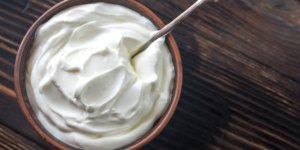Nothing breaks a heart like an anticipated leftover meeting an early spoilage. For some people, the essence of keeping leftovers is to eat them later when cooking afresh may be out of the options.
Before we get into the details of this article, it will be a good idea to stock up on some basic but essential food storage tools.
Plastic wrap
This food storage material can make your life twice as easy. Plastic wrap, otherwise called cling film, helps you keep your food tightly sealed while locking out moisture.
It can be used alone to wrap uncooked veggies or with other items like storage jars.

Wax paper
With the added advantage of taking up only a little space in your fridge, wax paper is another must-have storage item. The wax on the paper serves as a barrier for moisture within and without. That is, when you store food in a sheet of wax paper, the food doesn’t dry out, and moisture from the fridge doesn’t get into it. Your food remains just as fresh as it was when you made it.
Don’t try to warm up your food on wax paper, though. The paper may catch fire.

Aluminium foil
This is arguably one of the most widely used storage tools for sandwiches and wings. It also comes in handy if you have leftovers you want to store in the freezer. When properly used, it can protect the freshness of your food and keep it safe from a freezer burn.

Plastic storage bags
These storage bags work well for sandwiches, fruits, and veggies. The airtight lock seals help ensure your food is well protected from spoilage. Moreover, they are sturdy and can hold a large amount of food. Plastic bags also make food storage easy because you can label the bag for easy identification.
A famous brand name is Ziploc.

Storage bowls and jars
Invest in storage bowls and jars for better organization and sustainability. Unlike other storage items that need regular restocking, this purchase can be a one-time, one-off buy. You can use these storage tools for as long as five years with proper handling.
Be specific about using airtight storage jars or bowls with lids and rubber gasket seals. These help keep your food away from moisture, the single, most important agent of spoilage.
Amazon’s Rubbermaid Brilliance Food Storage Container set provides quality, durability, and affordability.
N.B: If you are into long-term food storage, you may also want to consider investing in tapes and markers. You can mark and label your food containers and jars to easily identify what is stored there.

Tips on storing leftovers
Before packing any leftovers to store in your fridge or freezer, ensure they are sufficiently cool. You can test this by placing the container or bag or a piece of the food on the back of your palm for about thirty seconds. If you can tolerate the heat then the food is set for the fridge.
Make sure your fridge or freezer is working correctly. Faulty cooling of the appliance could affect the storage shelf-life of your food.
It’s one thing to store your leftovers with storage items but another to do it right. Be sure to seal your storage containers, bags, or wraps appropriately.
Use good-quality storage containers. Two commonly used storage containers are plastic and glass. Plastic storage containers are easy to handle and transport, and most are also microwave-safe.
However, they also tend to retain odours and stains; after prolonged freezing, they become brittle and may break. Good-quality plastic storage containers, however, promise better durability.
Glass storage containers, on the other hand, are leakproof. They’re also freezer, oven, and heat-safe. On the flip side, they’re harder to handle, may be pretty heavy, and more costly.

The best way to store leftovers
There are some storage methods specific to particular foods. Here are a few:
How to store fried food
Freezers and fried food aren’t exactly best of friends. So, as a rule of thumb, never store your fried food in the freezer, except if it has been fried to dryness, like fried fish. You’re better off storing your fried foods like plantains and eggs in the fridge, and only for a few days.
How to store soft vegetables
The ideal storage tool for this is a plastic bag or storage container.
If the vegetables are cooked, separate them from the broth or juice before packing them into the storage container. In your freezer, the vegetables can stay for up to 6 months. They last about five days in the fridge but only about three days if stored with the broth.
If your choice storage tool is a plastic bag, press air out of the bag before sealing it.
Uncooked vegetables are better stored in the fridge in plastic bags. Again, press out the air before sealing it. Storing these vegetables in the freezer will cause them to wilt or soften excessively upon thawing.
How to store hard vegetables
Hard vegetables like carrots or eggplants remain hard when fresh and uncooked. If you have cooked your carrots, beetroot, or eggplant, follow the storage instructions for soft vegetables.
Hard vegetables are best stored in plastic bags that are void of air. You can keep them refrigerated for as long as ten days. Some people recommend stuffing the plastic bag with a paper towel to absorb excess moisture and keep the vegetables dry.
How to store sauces
Stews and sauces should be stored in storage containers for safer and easier handling. Keeping them in the fridge works just as well as keeping them in a freezer, but freezing ensures a longer duration of storage.
Refrigeration should be your only option for starch-based sauces. This is because frozen starch-based sauce, when thawed, becomes gelatinous. The consistency and thickness of the sauce are altered because the starch soaks up water to form a gel.
How to store cream-based foods
Never freeze cream-based foods. Thawing is a problem for this type of food, as with other foods that should not be frozen. When it thaws, the cream phase of the food separates from the water phase. You have probably seen this happen to ice cream that has been frozen for a long time and left to thaw.
Instead, store these foods in cling films, aluminum foils, plastic bags, or storage bags, depending on the type of food, and keep them refrigerated.
How to store pizza
The storage tool used to store pizza leftovers depends on how long you want to keep it.
If you’re looking at long-term storage, say three months, use aluminium foil. It will protect your pizza from freezing burns.
Wax paper is most suitable for short-term storage. This ensures that the freshness and taste of your pizza are not compromised. Ensure that you wrap the pizza tightly, though.
How to store salads
You can store your salad in whatever bowl you eat it in, using a plastic wrap to cover the top tightly. Wrapping the bowl all around is the most moisture-proof way to do it.
Alternatively, you can use a storage container for this.
How to store other cooked food
Other cooked food can be stored in the fridge or freezer; it’s your call. But remember that foods stored in the fridge usually have a shelf life of 7 to 10 days maximum. Anything longer than this will either change the taste of your food or make it go bad.

In conclusion
Storing leftovers can be daunting, but with the right tools and techniques, you can keep your food fresh for a longer period. By following these guidelines, you can enjoy your leftovers for a longer time, reduce food waste, and save time and money.











